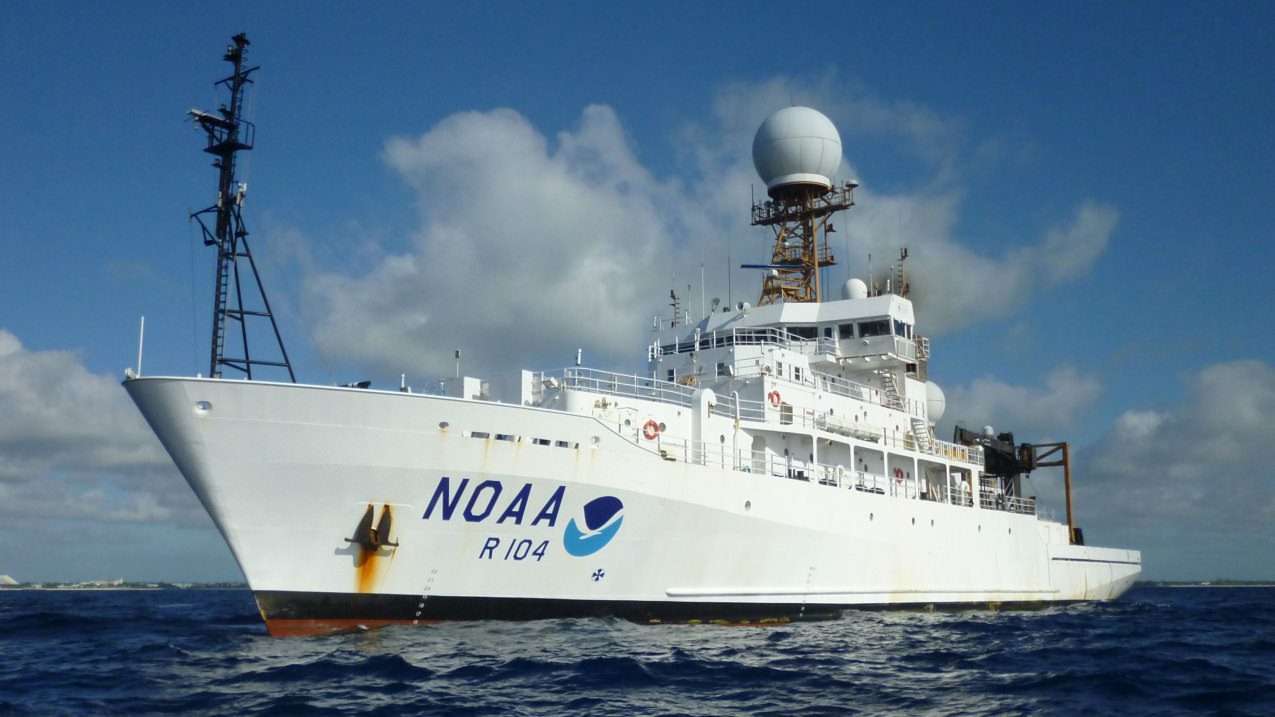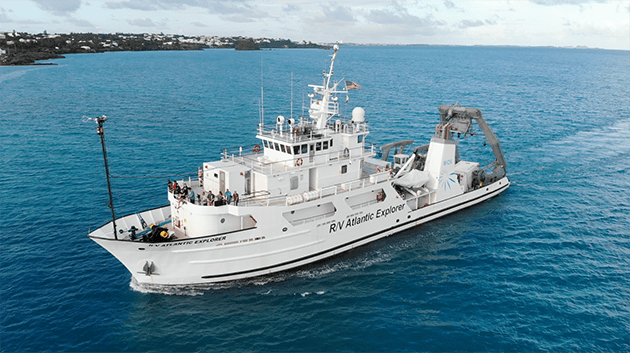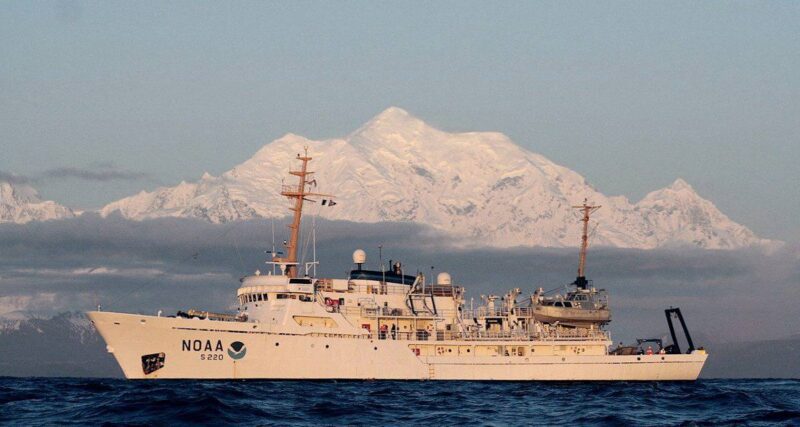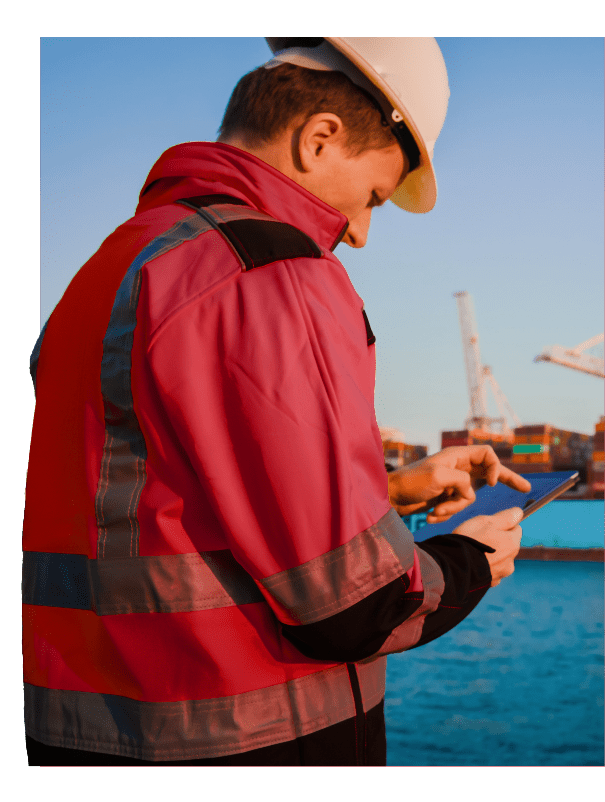NOAA Names Two New Research Ships
The National Oceanic and Atmospheric Administration (NOAA) has announced the names of two new charting and mapping vessels set to join its fleet. The ships, named “Surveyor” and “Navigator,” are...


The oceanographic research vessel NOAA Ship Ronald H. Brown is the largest ship in NOAA's fleet. (Image credit: Wes Struble/NOAA)
by John Konrad (gCaptain) In the realm of seafaring, mariners maintain a keen eye on two things: weather and the maps that guide them safely through unknown waters. These nautical charts don’t just ensure the smooth journey of seafarers but also provide invaluable data for those engaged in both commercial and recreational fishing. Often, the heart of an uncharted territory beats with the discovery of an unseen species, lurking somewhere deep below.
Amidst this vast universe, there’s a force diligently working to ensure that shipping routes are kept safe, especially in the aftermath of tumultuous storms. That force? A fleet of gleeming white ships managed by the hands of NOAA scientists, experts, and partners.
NOAA’s Marine and Aviation Operations currently oversees a fleet of 15 research and survey vessels. These aren’t just boats. They’re hubs of scientific endeavor, anchored in various ports across the nation. Each, crewed by both uniformed NOAA Commissioned Corps and civilian US Merchant Mariners, acts as the pulse that supports scientists from NOAA and the wider academic community.
But as 2023 unfurls its calendar pages, there’s a whisper of concern in the air. The average age of these ships is 30 years. By 2030, almost half of them would be nudging the end of their operational lifecycle. It’s not just about having ships, but ensuring they’re in prime condition to meet NOAA’s evolving demands.
Breathing New Life into The Old Guardians
NOAA isn’t letting its fleet age without a fight. To maximize the longevity of each ship, the agency is doubling down on maintenance practices.
Born in the shipyards of Halter Marine, Mississippi, the NOAA Ship Ronald H. Brown set sail in 1997, marking Charleston, South Carolina as its homeport. This global-class research ship canvasses the oceans, becoming the eyes and ears of scientists in their quest to decipher the ocean’s role in climate. Equipped with cutting-edge instruments, the ship captures the dance between the ocean and the atmosphere, revealing their impact on global weather. Apart from its high-tech laboratories and sensors, Brown’s ability to remain steadfast in rough waters enhances its deep-sea research. Its legacy includes partnerships in major studies, such as unraveling the mysteries of the West Coast drought and Pacific Ocean’s chilling temperatures. The ship sails under the name of Ronald H. Brown, the pioneering African American Secretary of Commerce, whose legacy resonates in its voyages — a man who championed opportunities and harbored a deep reverence for the NOAA fleet before his tragic demise in 1996.
The Brown is an important platform for NOAA but, like most of NOAA’s fleet, it needs rejuvenation. Starting in May, the Brown is in drydock for a year-long maintenance period at Bollinger Shipyards in Pascagoula, Mississippi. Next year, it will emerge with upgrades ranging from eco-friendlier upgrades to state-of-the-art systems. This overhaul isn’t just about sprucing up an old ship, it’s about ensuring it continues to serve the nation’s needs while being efficient, eco-friendly, and safe.
This comprehensive overhaul will introduce eco-friendlier diesel generators to modernize the propulsion system, alongside upgrades to the bow thruster, propulsion motors, switchboards, control systems, and alarms. The ship’s lifeblood – its systems – will also witness enhancements: from potable water plants and sewage infrastructure to uncontaminated seawater sampling mechanisms, HVAC, and navigation tech. Radar systems, overhead lighting, and crucial tank vent renewals are on the roster too. Moreover, in compliance with the American Bureau of Shipping (ABS) guidelines, Bollinger is set to revamp a substantial portion of the ship’s piping and any rusting steel components.
“NOAA Ship Ronald H. Brown is a global class vessel supporting scientific research to increase our understanding of climate and the ocean,” said Captain Amanda Goeller, Commanding Officer of NOAA Marine Operations Center – Atlantic. “These repairs, system overhauls and modernization will allow the ship to continue operating for many years to come.”
The Brown’s restoration is a blueprint for what’s in store for other vessels. By extending the life of these ships, NOAA is making an investment in the future. It also serves as a reminder of the importance of our nation’s repair yards.


Commissioned NOAA ships represent just one piece of the scientific mosaic. Research ships and partner vessels, which provide crucial data to NOAA and the academic world, also require regular maintenance and servicing at repair shipyards across North America.
For example, in a recent collaboration, Detyens Shipyards in North Charleston, South Carolina, recently took on the challenging task of refitting the RV Atlantic Explorer, a notable vessel under the flag of the Bermuda Institute of Ocean Sciences (BIOS) which partners with NOAA via agreements with Arizona State University. Rick Verlini, the Port Captain of the RV Atlantic Explorer, commended the exceptional craftsmanship and commitment of shipyard workers, noting, “Detyens was fantastic… everyone was friendly, providing competent assistance throughout the entire process, ensuring every task was completed proficiently.”
The project was no small feat, given the range of services the RV Atlantic Explorer needed. Housed in drydock, the ship underwent a comprehensive makeover, including a full blasting and coating of its hull and an underwater hull treatment. Routine maintenance was supplemented with specific steel and tank repairs, engine and thruster overhauls, and significant upgrades to its mission operations equipment. Furthermore, an intricate repair process was performed on the vessel’s ballast and fuel piping systems.
The next era of NOAA’s marine fleet won’t just rely on retrofitted ships. They’re thinking bigger, envisioning vessels constructed precisely for their unique requirements. Two such oceanographic behemoths, the Oceanographer and Discoverer, are being forged as we speak. By 2025, these ships, equipped with the latest in clean energy technologies, will set sail, championing NOAA’s diverse missions.


Upgraded and repaired NOAA ships are important not just to scientific research and chart data but they can help in the defense of North America itself.
The United States remains vulnerable in the Arctic, an area critical for national security. Although Washington’s policy rhetoric emphasizes homeland defense, the increasing activities of China and Russia in the region necessitate a comprehensive defense strategy. Currently, there’s an emphasis on acquiring new resources like icebreakers, which are expensive and time-consuming to produce. The US Coast Guard’s icebreaker project is falling far behind schedule as is Canada’s. As a stopgap as Russia and China increased naval activity near Alaska. Commercial arctic maritime activity is increasing with melting ice, making domain awareness paramount resulting in the U.S. military exploring the use of ice-hardened NOAA ships to help maintain domain awareness in the high north.
Also Read: Russian Warships Sent To Arctic
Historically, defense acquisition has been sluggish, especially concerning technology and infrastructure. Systems like the outdated North Warning System (NWS) must be modernized to address evolving threats. Quick, cost-effective solutions and partnerships with NOAA ships and US Merchant Marine vessels, could be a cure for the military’s over-reliance on traditionally expensive defense acquisitions. National Oceanic and Atmospheric Administration (NOAA) ships offer a potential solution. Its vessels, more active in the Arctic than the U.S. Navy and Coast Guard, could provide enhanced deterrence, maritime presence, and domain awareness – noted Dr. Ryan Burke, a professor at the U.S. Air Force Academy, in a recent CIMSEC podcast. Collaborating with NOAA and capitalizing on their existing Arctic presence and data could be a game-changer, filling gaps in our Arctic security strategy and ensuring a resilient defense posture while enhancing funding for traditional missions like weather observation and charting.
Some hope that Canada, which has been hesitant to purchase weapons to meet its NATO commitment of spending two percent of its GDP on defense, could fulfill its obligation in a similar manner by enhancing Arctic research, investing in ships, and promoting maritime research that supports commercial shipping, Arctic science, and military domain awareness.
Also Read: WHITE HULLS IN THE NORTH: THE CASE FOR TAPPING UNUSED FEDERAL RESOURCES IN THE ARCTIC at the Modern War Institute
Sailing into The Future
NOAA’s horizon stretches far and wide. An update to their 2016 Fleet Plan is brewing, promising a fresh perspective on their seafaring requirements, ongoing construction projects, and ambitious goals, like achieving net-zero emissions by 2050.
In this odyssey, NOAA isn’t journeying alone. They’re actively engaging the shipbuilding industry to join them in their vision for an eco-friendly future. After all, when it comes to understanding our planet’s oceans, atmosphere, and climate, collaboration is the anchor that will keep NOAA’s mission steadfastly afloat.
Join the gCaptain Club for curated content, insider opinions, and vibrant community discussions.


Join the 109,890 members that receive our newsletter.
Have a news tip? Let us know.
Access exclusive insights, engage in vibrant discussions, and gain perspectives from our CEO.
Sign Up




Maritime and offshore news trusted by our 109,890 members delivered daily straight to your inbox.



Essential news coupled with the finest maritime content sourced from across the globe.
Sign Up